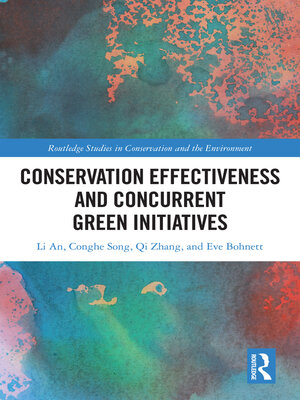Conservation Effectiveness and Concurrent Green Initiatives
ebook ∣ Routledge Studies in Conservation and the Environment
By Li An

Sign up to save your library
With an OverDrive account, you can save your favorite libraries for at-a-glance information about availability. Find out more about OverDrive accounts.
Find this title in Libby, the library reading app by OverDrive.



Search for a digital library with this title
Title found at these libraries:
| Library Name | Distance |
|---|---|
| Loading... |
The book examines concurrent green initiatives and their spillover effects on environmental conservation and management to reveal their impact on conservation effectiveness, drawing on a range of international case studies.
Green initiatives are programs, payments, or endeavors that restore, sustain, or improve nature's capacity, with examples including payments for ecosystem services and the development of nature reserves and protected areas. This book explicitly examines concurrent green initiatives, where initiatives overlap either geographically or in terms of recipients of multiple payments. The book provides a detailed analysis of case studies in the USA and China, including the USA-based Conservation Reserve Program and the Environmental Quality Incentives Program, and the China based Grain-to-Green Program and the Forest Ecological Benefit Compensation Fund. Through this comparison, the book shows the impact of concurrent green initiatives, including additional or unintended benefits for conservation and local communities as well as negative spillover effects. The book complements these case studies by drawing on other global examples ranging in size from local to continental, including planting native trees and shrubs in Australia and green initiatives in the Baltic Sea region. Overall, this book demonstrates the importance of analyzing concurrent green efforts to better understand both the positive and negative impacts to ensure the optimal effectiveness of these policies and programs for conservation and environmental management.
This book will be of great interest to students and scholars of environmental conservation and management, land use, ecosystem services and environmental policy, as well as policymakers and practitioners working on environmental initiatives and programs.







